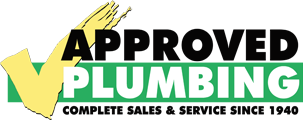Due to the extremely cold temperatures we had earlier this month, the newest trending topic seems to be frozen pipes. Many people are asking us what they can do to prevent frozen pipes and what to do when their plumbing pipes do freeze. Here are some preventative things you can do…
- In the fall, seal any visible openings and check for drafts.
- Install heat tape such as chromolox along with pipe insulation on all pipes exposed to frigid air (or call a professional at 440-526-2905).
- Use insulation to block any drafts or cold areas.
- Open cabinet doors to get heat to pipes.
- Run water or check faucets frequently.
- Raise the temperature of your thermostat to counter the effects of subzero temperatures.
- Never ever leave a home with frozen pipes unattended.
- Thaw frozen pipes ASAP and before they burst, be prepared to shut off the water at a moments notice.
Typically, frozen water expands and causes the pipe to break and when the water thaws, the line will pop and water will flow uncontrollable into the house. Letting a faucet slowly run is not necessarily the answer to preventing frozen pipes because the slow water can freeze as well and cause an ice blockage.
Damage can be alleviated by reacting quickly. Never leave the house unattended with frozen pipes. Remember, the longer pipes stay frozen, the more likely they will burst. It is critical to thaw the pipes as soon as possible. Some find it useful to use a portable heater or blow dryer on their frozen pipes, however, make sure to NOT use a blow torch to heat your pipes.
Frozen pipes are dangerous and can cause excessive water damage to ceilings, walls, hardwood floors, carpeting, and many other things if they burst. Technicians at Approved Plumbing have seen entire houses flood, and freeze, creating un-reversible damage. A trained plumber can provide a pipe thawing device to allow water to thaw and re-establish flow in minutes. We can provide a complete home inspection to help prevent such occurrences. Schedule today at 440-526-2905



Leave a Reply